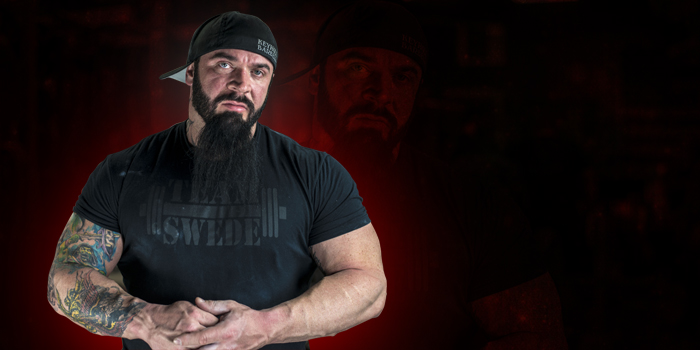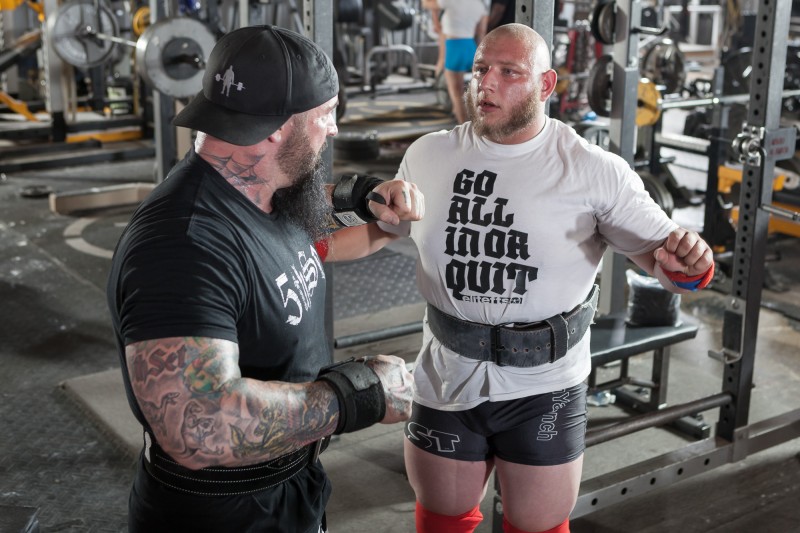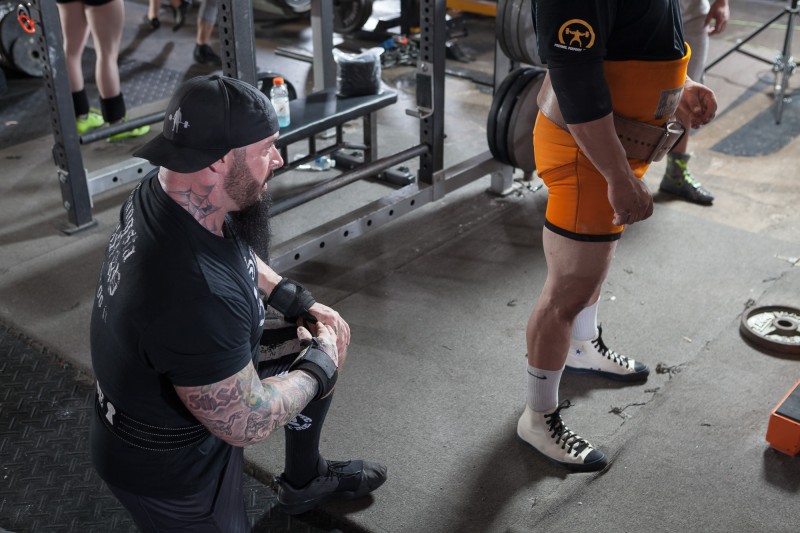
You might be surprised by some of the topics I am asked to write about. I'm a powerlifting coach, but quite frankly, most of the suggestions I get are marginally infringing on the periphery of powerlifting-related, at best. That's not to say none of these subjects interest me. They do. And I'm comfortable offering advice on them.
However, while these may be interesting ideas, there is usually not a lot to go on about which is within my scope. Meaning: I don't think an article is there. One example I've been asked for a few times is an article about my general recommendations for strength training for rugby players. Rugby players benefit from both types of strength endurance (linear/non-linear) as well as starting strength, explosive strength, maximal strength and at least a moderate level of muscular development. All of these capacities are effectively addressed throughout the course of a typical 5thSet mesocycle and so the method can easily be modified to suit the strength needs of a rugby (or similar) athlete by reducing total assistance work volume and running the program that way. I've done this with great results in the past when I was still splitting my focus and working with athletes outside of my own forte. That is the extent of my very general recommendation for strength training in rugby players and about as much as I feel qualified to offer. About a half-paragraph. Much more important than the strength training, in these cases, is the sport-specific work they will do in practice. That's how come I glaze over topics not directly related to my field of concentration.
Most people take things at face value. They do not possess the requisite skill set to dissect and critically assess facts effectively. It isn't good or bad, it's something that just is. Most are wired differently than I am, and so their lives are much more simple than mine. Sometimes I envy them. Even a quick explanation like I gave above can be very helpful. So I do understand why my inbox stays full and I always make an effort to respond when I can. But I can't let much of my focus shift away from the fact that where I excel professionally is in my own lane, as a powerlifting coach.
So I decided to write an article about just that: specificity.
Staying in my own lane and keeping a laser focus on pursuing excellence in the sport of powerlifting is what has allowed me to rise to the top of my field as a coach; specializing, not generalizing. I think the same is true for most people in positions similar to my own. The best brain surgeons are probably not splitting their time between surgeries and law school.
Common sense, right?
Specificity is a term with a broad range of types, all of which are fractal in nature. They are all reiterative, though each is applied on its own scale. For the remainder of this article, we will examine all of these which are relevant, and how they apply to training for the powerlifter.
Exercise Selection
The first type of specificity we should look at refers to keeping the competition lifts, themselves, the main priority in training, and dedicating the lion's share of focus or volume load to them. This type of specificity should be honored year round. It is sacrosanct, in my opinion. The competition lifts should always be treated as the most important movements used in training.
While the protocols used for these lifts may shift slightly throughout the course of a training year, with respect to proximity of competition, the lifts themselves should always remain preeminent. Squat, bench press and deadlift are all we have to do in a powerlifting competition, and so, most of the training we do for said competition should, logically, consist of those lifts.
Very few lifters have what I would consider proficient technique in the big three lifts. Understanding that, the only effective way to improve technique I am aware of involves consistent reinforcement of corrective cues while performing those lifts throughout the course of normal training.
WATCH: Table Talk with Swede Burns and JP Carroll — Keeping Good Form Through Every Rep
But some lifters do have great technique. Would those individuals be exempt from such a need for this type of specificity in their training? My answer to that questions is absolutely not.
Even the most beautiful technique will degrade over time if it is not practiced and correctives are not reinforced. If you are telling yourself that you know of some lifters who have good technique and they rarely perform the main lifts to competition standard in training, I would offer that their technique would be much better if they honored the specificity I am referring to here.
Remember when I said sport-specific work was more important than strength training to the rugby player? The sport-specific work is the strength training for the powerlifter. Or, at least, the exercise selection for it should be.

Training Intensity
The next type of specificity we need to consider refers to training the lifts in the intensity ranges which will be used on the platform. While this is very important, it is something that becomes more of a priority as we approach competition.
Quite frankly, taking heavy singles in training year-round is not the best way to develop an athlete for competition in the sport of powerlifting. There are a bunch of reasons for this and in order to appreciate them all, we need to take a look at the bigger picture.
Technical proficiency is a capacity which is most easily developed and maintained while training in percentages ranges slightly below those we should ever see on the platform. It is very difficult, if it is possible at all, to make technical corrections in the 90-100% of 1RM range. Yet, there doesn't seem to be any down-side to training at intensities in a range marginally lower than those figures. Doing so allows the lifter to safely elicit the same or better strength adaptations and get much more practice executing the lifts while providing far greater opportunity for repetition and reinforcement of cues via increased training volume load. If we look at Prilepin's Chart, we can see those volume recommendations for a lifter using 75% of 1RM are roughly triple those for a lifter using 90% of 1RM.
Improving technique is a process which takes some time. It usually does not happen overnight. We've already established that most lifters have plenty of room for improvement in this regard, but even those who don't will benefit from training in ranges of intensity where technical breakdown is less likely. In my opinion, lifters will develop most effectively, all around, training the lifts in the 70-85% range anytime they are not in the process of peaking for competition. A peaking cycle should only make up approximately the last six weeks of a six-month macrocycle, so that should give you a picture of how often I think a lifter should be lifting in the 90+% of 1RM range (the range we use on the platform).
Hypertrophy
Hopefully, no one reading this will be surprised to hear that hypertrophic adaptations are a very important part of development for any powerlifter. There is not much room for contention on this topic, but I am open to hearing any opposing argument to that end. Muscle is what we use to lift weights. It's both protective and assistive.
With that said, all hypertrophy is not created equal. The hypertrophy we develop doing isolation movements or various other assistance exercises is good. However, lift-specific hypertrophy, stimulated by performing the competition lift (or similar) in an appropriate rep or intensity range is much more useful. So this is another consideration.
Am I suggesting that we all only squat, bench, and deadlift in training and vary the rep ranges? No. Of course not. I have very specific (SEE WHAT I DID THERE?) recommendations for everything from the activation, to the main, to the assistance, to the corrective, to the recovery work a powerlifter should perform in training and even competition, and I have covered all of those in great detail in the two books I've written on the subject. They are both available on this site, by the way. Shameless plug, IDGAF.
I hope you found this article helpful and it gave you some things to think about regarding your training. If that is the case please share it and feel free to reach out to me with anything you'd like me to write about in the future.











